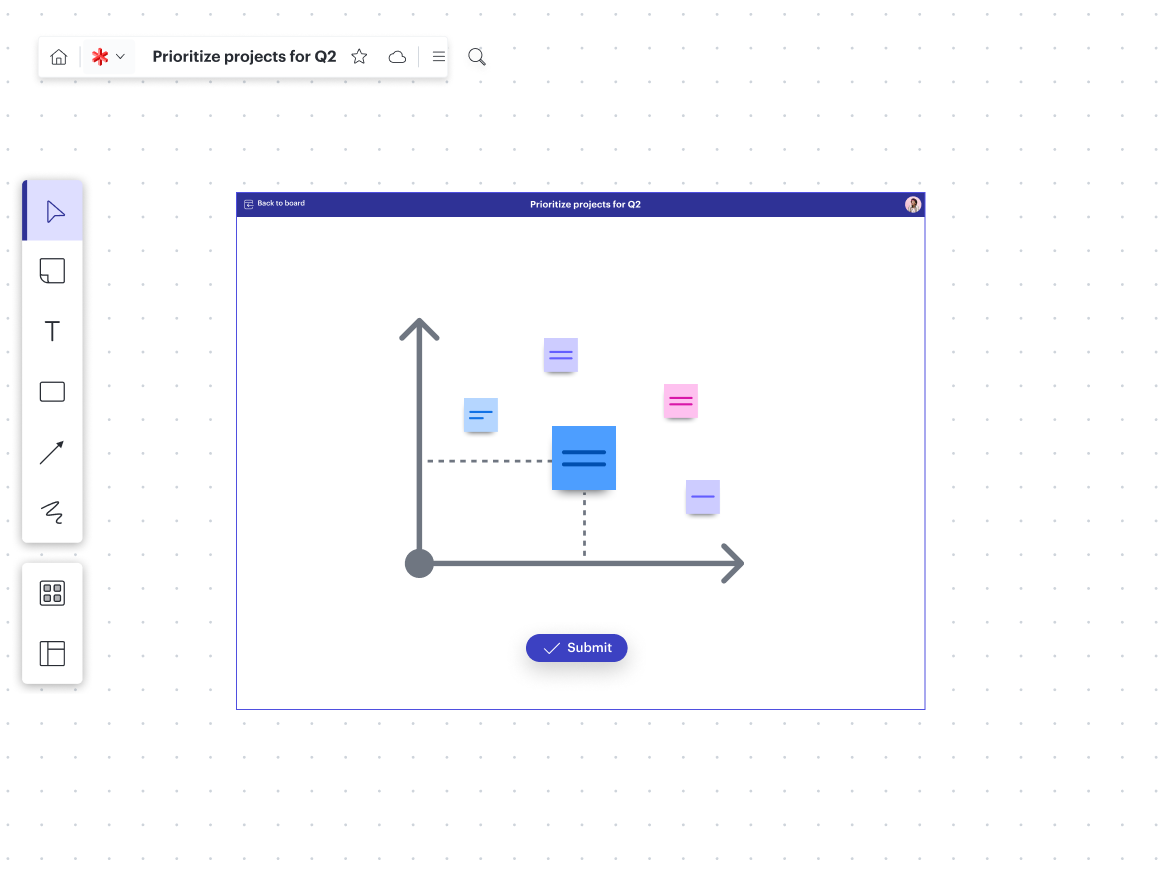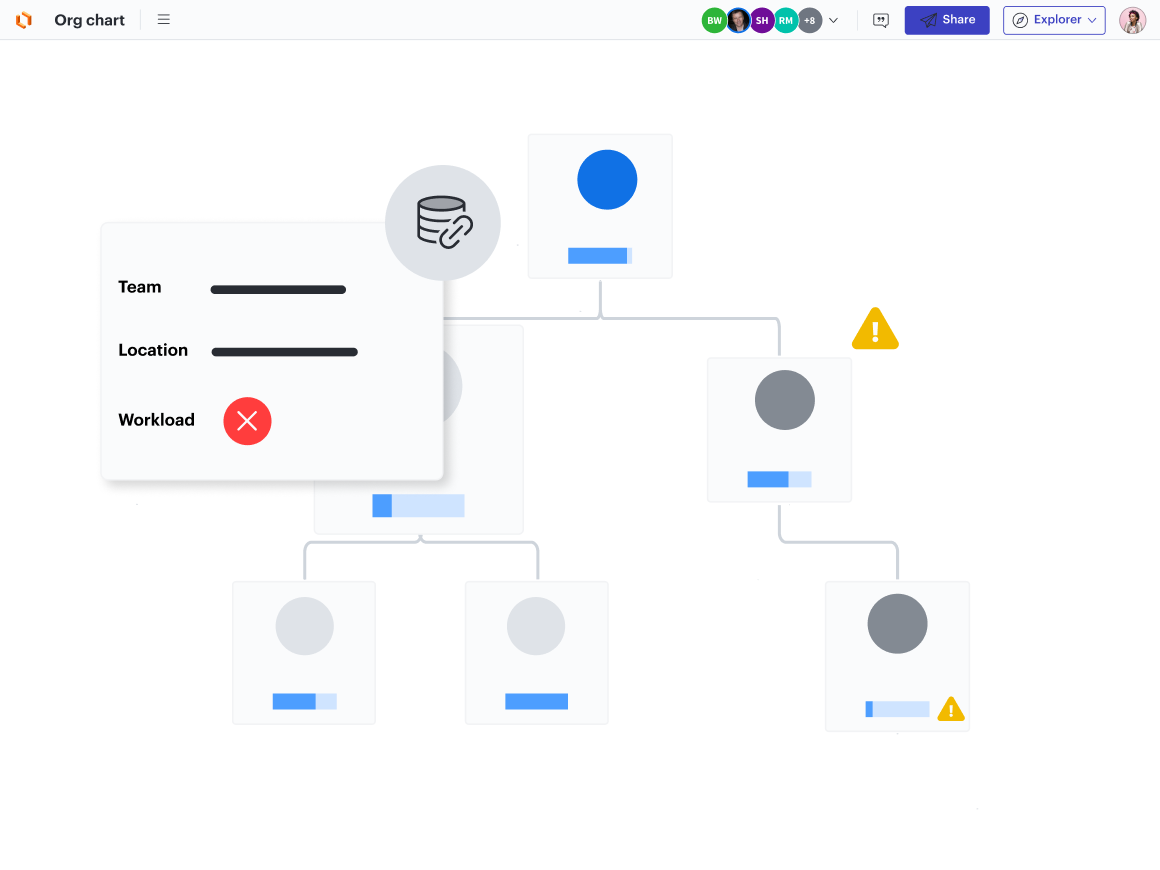
A step-by-step guide to business process improvement
Reading time: about 12 min
Table of contents
All process improvement is driven by a singular goal: to usher in higher levels of efficiency in an organization’s day-to-day operations. To accomplish this goal, teams often start by identifying wasteful practices within a process to remove inefficiencies, bottlenecks, or redundancies lurking beneath the surface.
But identifying what the issue is, isn’t the end—determining how to implement process improvement is the real challenge.
What are businesses' most common mistakes when approaching process improvement initiatives, and how can you avoid those? How do you take a process improvement project and inject it with additional value by measuring your results? Finally, how can you push your teams to think about process improvement in terms of continuous improvement rather than putting out fires?
That’s what we’re here to fill you in on.
Process improvement methodologies
Most businesses tackle these questions by implementing a process improvement or management methodology. Some of the most popular include:
- Lean Six Sigma: This framework combines Lean principles for waste reduction with Six Sigma's focus on defect reduction. Lean Six Sigma is used across a variety of industries, including manufacturing, healthcare, financial services, and more
- Agile: This methodology involves breaking projects into phases, encourages quick feedback loops and iterations, and promotes continuous collaboration and improvement. Agile was originally applied to software development but has been adapted to different industries.
- Business process management (BPM): BPM is a systematic approach to optimizing and managing an organization's processes, focusing on efficiency, effectiveness, and continuous improvement. Like Lean Six Sigma, BPM is prominent in manufacturing, healthcare, and financial services.
- Lean manufacturing: Primarily used by general, automotive, and medical device manufacturing industries, Lean seeks to minimize waste and maximize value by streamlining production processes and emphasizing customer satisfaction.
- Theory of Constraints: This management philosophy identifies and addresses bottlenecks or constraints within a system to improve overall productivity and performance. The Theory of Constraints is often used in manufacturing, project management, and supply chain management.
While these methodologies can yield successful results, none of them are a cure-all. Relying entirely on a single methodology can frustrate stakeholders when inefficiencies arise and workflows aren’t followed. Combining a couple of approaches might be more effective. So, think deeper about what your teams need to succeed and how you can take pieces from these methodologies and use them to create the right solution for your organization.
For some organizations, one of these methodologies might be a comprehensive solution that works flawlessly. For others, combining a couple of approaches might be more effective. So, think deeper about what your teams need to succeed and how you can take pieces from these methodologies and use them to create the perfect solution for your organization.
If you’re struggling to find out whether you should implement a particular methodology or even pieces of a framework, here are a few tips:
- Identify your goals: If you know where you’re going, it’s much easier to know where to start. Identifying your goals will help you choose the proper framework to help you achieve them.
- Get clear on bottlenecks: Getting clear on your roadblocks will likely help you choose the ideal methodology or know what you need to incorporate to eliminate them.
- Gather feedback from your team: Your team will be able to test things out first and let you know what kinds of improvements they’re seeing. Their feedback and quantitative data will make it easier to gauge how things are going with a current or past process.
Differences between business process improvement and business process management
Business process improvement falls under business process management. While BPM is a comprehensive approach to managing processes within an organization, business process improvement is more specific and takes a look at individual processes. Business process improvement has the goal of solving problems within certain processes and measuring those changes. BPM on the other hand, has the goal of ensuring that processes align strategically and lend themselves toward operational efficiency.
5 common pitfalls in business process improvement (and how to avoid them)
We’ve been around the block in terms of improving our internal processes and helping our customers with their improvement initiatives. So, we’ve gathered five of the most common pitfalls that can make process improvement projects frustrating. Awareness of these pitfalls is a helpful step before you dive into your next process improvement initiative, as they can help you avoid potential obstacles.

1. Lacking data support
Leaders will often call for an all-hands-on-deck approach to process improvement ideation, but they need the support of data to guide or validate their decisions. And if data does exist, it’s often buried in complex spreadsheets, making it hard to extract meaningful insights.
When you bring teams together, there are bound to be many ideas about which processes to improve and how. The issue is that it’s difficult to measure the impact of implementing all those ideas and even more challenging to prioritize them.
Instead of a vague call for input, you should measure your processes and analyze that data to determine where your teams can remove waste and optimize workflows.

Then, rather than team members feeling like their ideas aren’t being heard during a meeting, you can prioritize ideas based on data and create clear action plans.

Here’s a data piece you may be overlooking: success measures for each process. How do you know that a specific process improvement project is taking too much time to wrap up? How do teams know which tasks to prioritize? Answer these questions by identifying what a successful process looks like and how you'll measure it.
To identify processes to improve, leaders should start by analyzing data from previous projects and measuring their performance against key metrics. Those metrics may include efficiency, productivity, cycle time, turnaround time, effectiveness, capacity, timeliness, and more.
Use the SMART (specific, measurable, achievable, relevant, time-based) methodology to create achievable and quantifiable goals tied to your identified metrics. Setting achievable goals helps increase visibility among your team members. With the data you’ve collected as a baseline and your actionable goals as a lighthouse, it’s much easier to know when something is off-base.
2. Operating from a narrow perspective
Teams often make the mistake of siloing themselves when trying to improve their internal processes. The issue with this approach is that teams won’t understand how their process improvements affect other connected teams and departments, restricting visibility and making it harder to measure results.
It's essential to approach process improvement through a systemic lens rather than a narrow team perspective. This broader perspective allows teams to identify and address blockers and impediments in the process. After all, improving efficiency within a group is meaningless if it doesn't contribute to delivering results at the end of the day.
What sets Lucid apart is our commitment to data-driven visualizations. Visuals serve as a universal language, enhancing communication. Lucid's visualization capabilities make it significantly easier for teams to grasp their place within the larger system. This increased visibility becomes a game-changer in the realm of process improvement.

3. Lacking a future state vision
While the current state mapping process is critical to identify what is causing issues in your system (mainly because it may differ from what you initially thought), you don’t want to get stuck in the past. Teams also need a clear vision of the future to understand what needs changing and how.
To alleviate this problem, begin with a future state map. If you initially focus on mapping the future state, you’ll create a document tied to success. That future state document can serve as a north star for your teams, guiding everyone through the project and aligning all initiatives with that vision of future success.
Once you have a clear vision of the ideal process, it may be easier to identify areas in your current state that don’t align with the future state you’ve created.

Pro tip: To effectively map the future state of your process, get clear on your process improvement goals. This way, you’ll know what you’re trying to accomplish by changing the workflow, which can guide your decisions on the future state. If you need somewhere to start, check out these goal-setting templates.
4. Only improving processes reactively
Don’t wait until a process is in dire need of improvement to start documenting its current state. Instead, take a proactive approach to documentation and think of mapping the current state not as the first step in a process improvement project but as a continuous task.
Another approach to consider is that as teams work to release a new feature or wrap up a sale, they can document the workflow as they go. Making the process itself a deliverable in addition to the work can make it so everything is tied together with a tangible example.

More ways to improve processes proactively
Want more ideas on how you can improve a process proactively? Check out the different ways seven Lucidites used Lucid for process improvement.
Read more5. Involving the wrong people at the wrong time
All progress depends on having the right people in the room at the right time. Determining who those individuals are can be far more complex than it initially appears. A standard guideline is to involve those closest to the process in the improvement project, and while that can work well, the guideline has its limits.
Those intimately familiar with the current process are invaluable when mapping the current state; they provide the most accurate perspective and can get the closest to the ultimate source of truth. However, the leadership team needs to take the helm when it comes to shaping the process’s future state.
The primary objectives for leadership teams are to formulate overarching visions, remove obstacles for their teams, and clarify those visions. By creating the future state of the process (in collaboration with those working within it), leaders can fulfill all those objectives and create a crystal-clear vision and action plan for their teams. Their teams will feel more guided, supported, and empowered as a result.
3 steps to actually improve your processes
Employees might groan when asked to improve an existing process and for understandable reasons.
Process improvement might feel like a barrier to “real work,” especially when teams expect pointless process improvement projects that never truly go anywhere. Or, if they do lead to change, the results aren’t measured, so there is no way to quantify the impact.
This is the frustration we want to help you avoid. These three steps focus on the process of process improvement. That is, how to actually improve your processes, make work easier for your teams, alleviate frustration, remove impediments, and improve workflows for everyone.

1. Ideate and plan
As we covered in the pitfalls section, many teams get bogged down in the ideation stage by the current process. Getting stuck in this stage might look like countless drafts of a current state map and directionless meetings attempting to workshop how to improve the current state. Instead of going through these rounds, let the future vision of the process guide these ideation sessions and help clarify the current state.
To create a productive ideation session, gather your team together and get clear on your future vision. Leadership teams should be directing this meeting and trying to remove obstacles blocking the team from creating the ideal state.

Start those ideation sessions by asking your team, “What does success look like? What are our goals with this process? What do we want this process to accomplish, and why?” Right off the bat, these questions will guide your teams into a productive, forward-thinking discussion that can lead to a powerful and precise map of the future state of the process.

How should leadership teams go about identifying obstacles? By visualizing potential roadblocks and keeping the big picture in mind.
As we mentioned, one of the most common mistakes teams make when tackling a process improvement project is to approach it from a narrow perspective. When teams try to improve only their own processes within their unit instead of the system, they lose track of how the process fits into the overall organization. In concentrating on improving the system, you must consider how the team and the process you aim to improve fit into the organization.
2. Design and build
This leads us to one of the most critical aspects of the designing and building phase. Teams will often view the documentation of the current or future state as a single, static document, making it impossible to perceive the impact of process improvement effectively. Instead, teams should aim to add layers to their process maps.
Layers play a pivotal role in the design process because they enable you to present a high-level, easily digestible version of your procedure and a more detailed breakdown of each step. Choose a platform that facilitates working across different pages within a single document and interlinking them to create a dynamic representation of your new process.

In Lucid, you can seamlessly work with layers on an infinite, unified canvas and create distinct pages within your document.
Then you have Lucid’s collaboration features, including the ability to tag or mention team members, place sticky notes directly on the board to call out important details, switch between high-level and detailed overviews, host voting sessions directly in the document, and easily share the document with anyone. You can build brilliant and interactive designs within Lucid's platform with dynamic shapes, conditional formatting, data linking, and more.
3. Launch and monitor
Once you’ve launched a new workflow or updated an existing one, you must store the documentation you created during the process of process improvement. Having this documentation will allow you to build up a document repository that acts as a living blueprint of your innovative decisions, ideation processes, design iterations, result-tracking dashboards, and much more.
During the launching and monitoring stage of process improvement, you’ll want to look for opportunities to automate workflows. Manually keeping up on documentation and data tracking can be tiresome and leaves room for error.
Instead, you’ll want to ensure your platform has intelligent features that keep your documentation up-to-date automatically and guarantee uninterrupted visibility. That includes pulling data from other systems. This way, leaders have a real-time view of the process and the progress.
Creating dynamic visuals within our platform means you’re naturally creating a living blueprint of how you went about optimizing your processes. Having that documentation means it will be easier to replicate successful strategies, iterate on feedback, bring on new hires, provide context for decisions, and so much more.

Lucid is an ideal partner in process improvement
Along with a solid foundation in visuals, intelligence, data, and automation, Lucid offers the Process Accelerator, an add-on that allows users to standardize how processes are documented, published, and stored across an organization
Learn moreAbout Lucid
Lucid Software is the leader in visual collaboration and work acceleration, helping teams see and build the future by turning ideas into reality. Its products include the Lucid Visual Collaboration Suite (Lucidchart and Lucidspark) and airfocus. The Lucid Visual Collaboration Suite, combined with powerful accelerators for business agility, cloud, and process transformation, empowers organizations to streamline work, foster alignment, and drive business transformation at scale. airfocus, an AI-powered product management and roadmapping platform, extends these capabilities by helping teams prioritize work, define product strategy, and align execution with business goals. The most used work acceleration platform by the Fortune 500, Lucid's solutions are trusted by more than 100 million users across enterprises worldwide, including Google, GE, and NBC Universal. Lucid partners with leaders such as Google, Atlassian, and Microsoft, and has received numerous awards for its products, growth, and workplace culture.
Related articles
How 7 Lucid employees use Lucid for process improvement
Learn from seven Lucidites how they use Lucid for process improvement.
6 operational efficiency examples to inspire your organization
See examples of how six companies used Lucid to enhance their operational efficiency.
Guide to strategic decision-making: Tools and techniques to make better business decisions
Strategic decision-making is the backbone of great leadership, but it’s not always easy to implement. Get our best decision-making tips here.
Creating a process repository: Learn best practices from a solutions consultant
Learn best practices for creating a process repository to work more effectively and efficiently in your organization.
